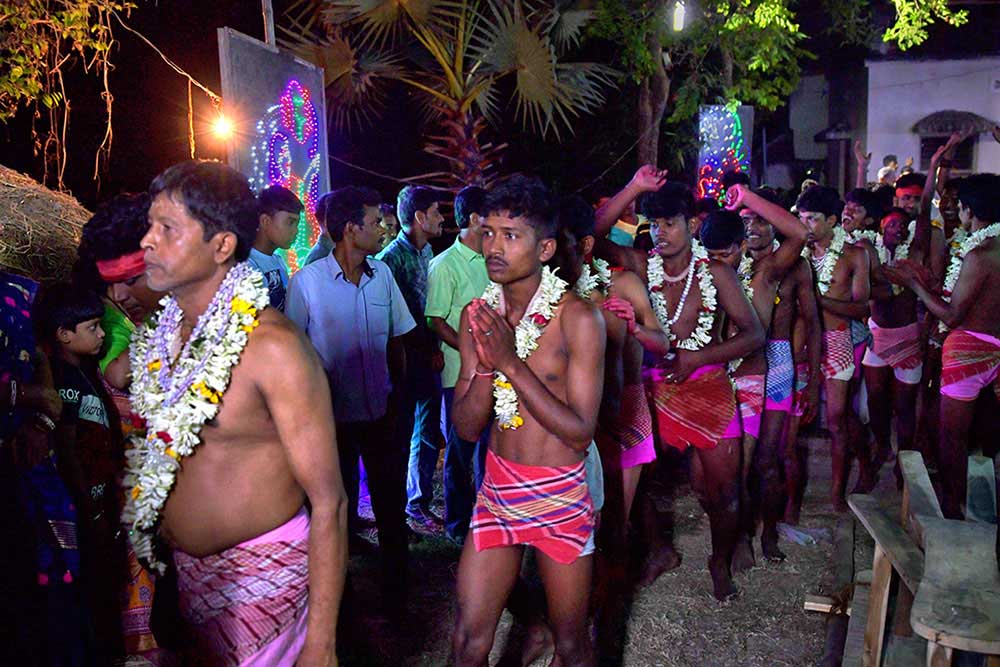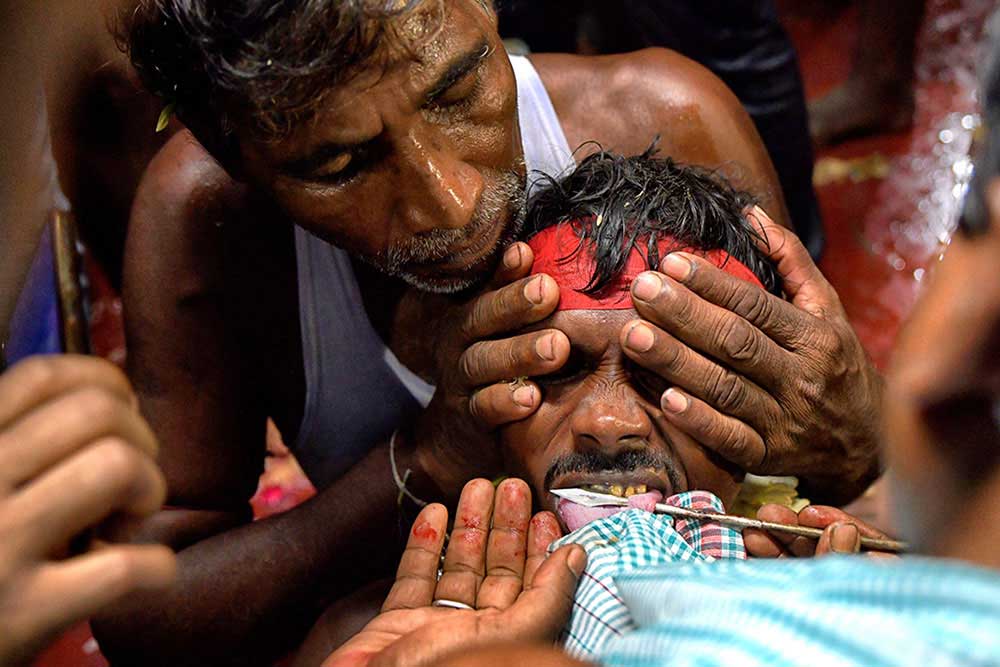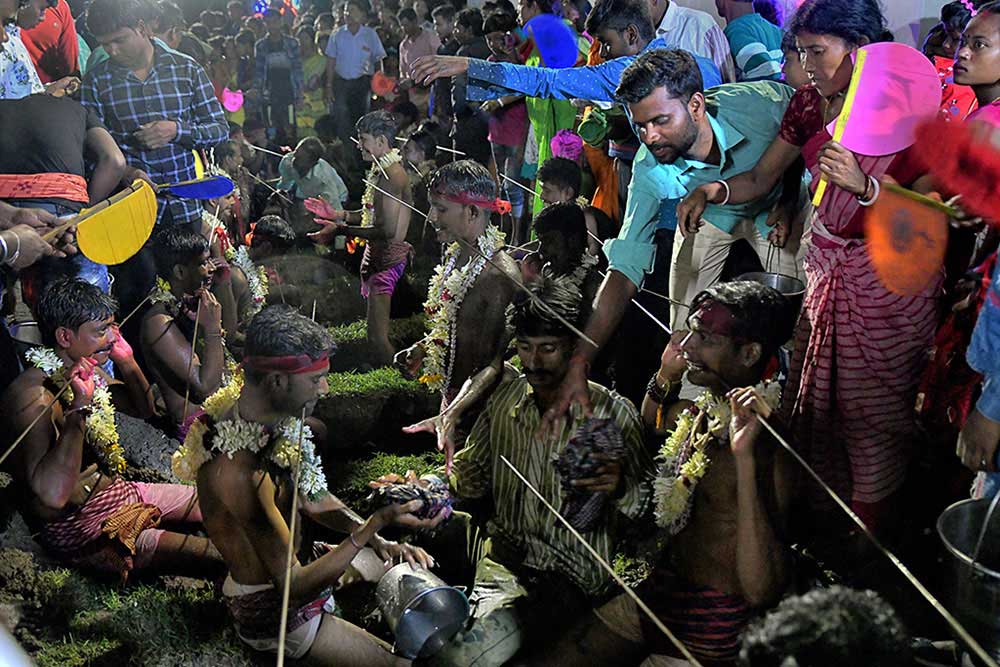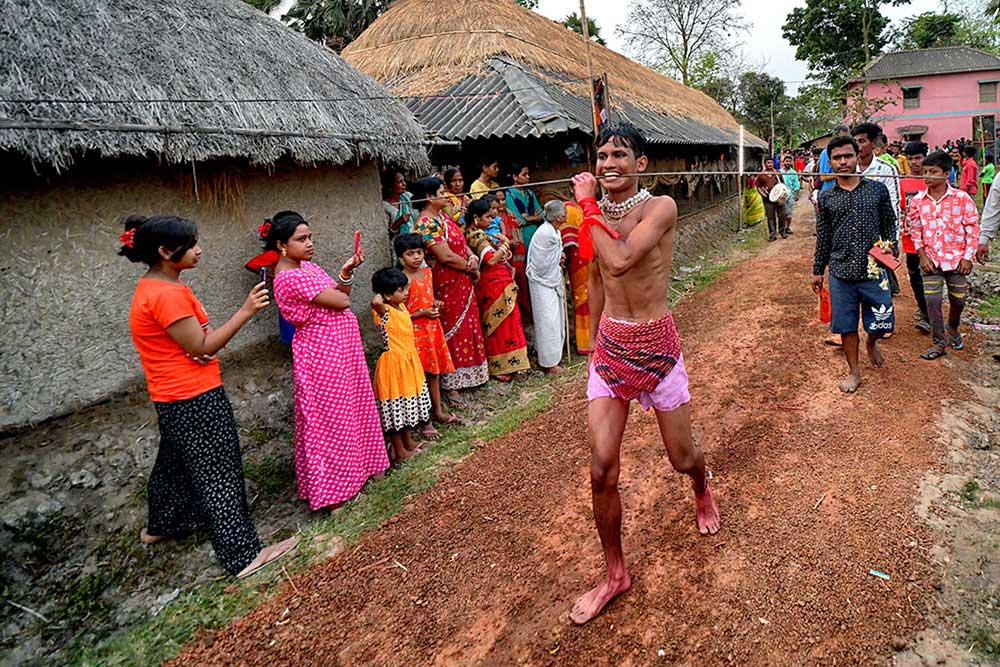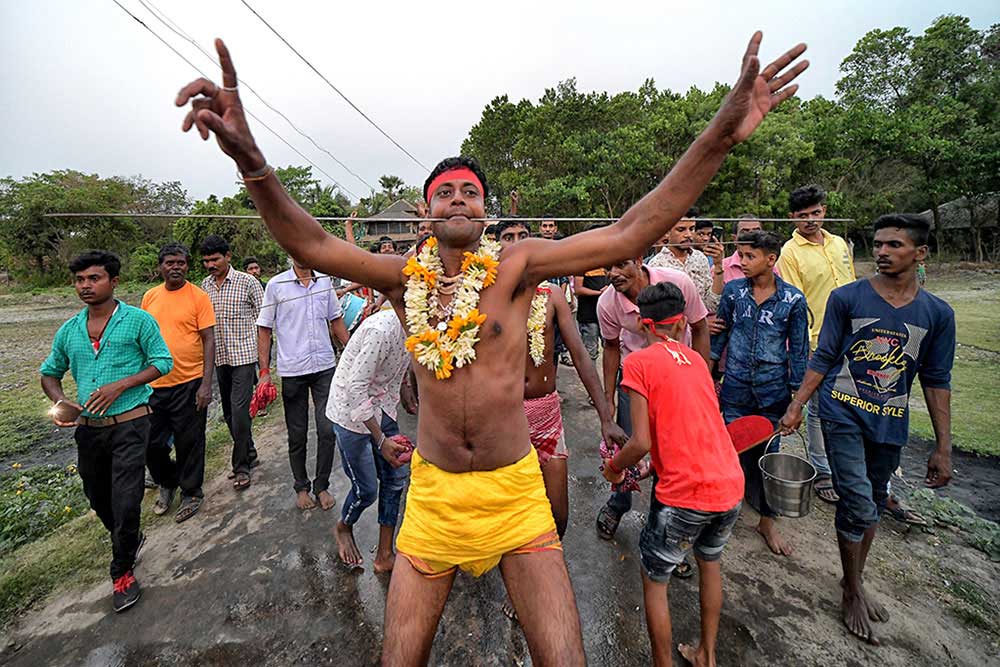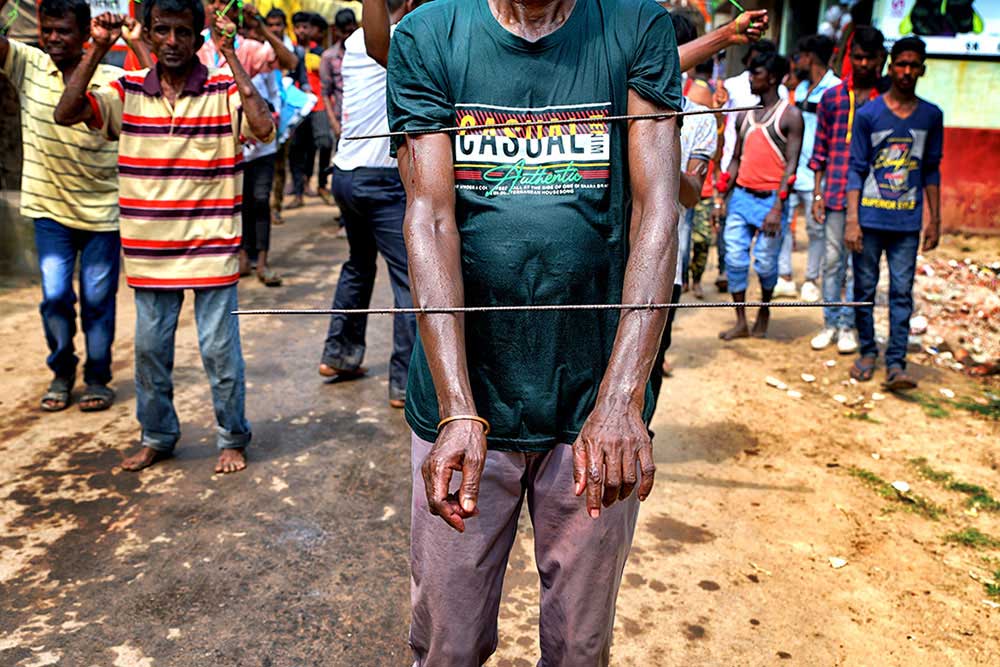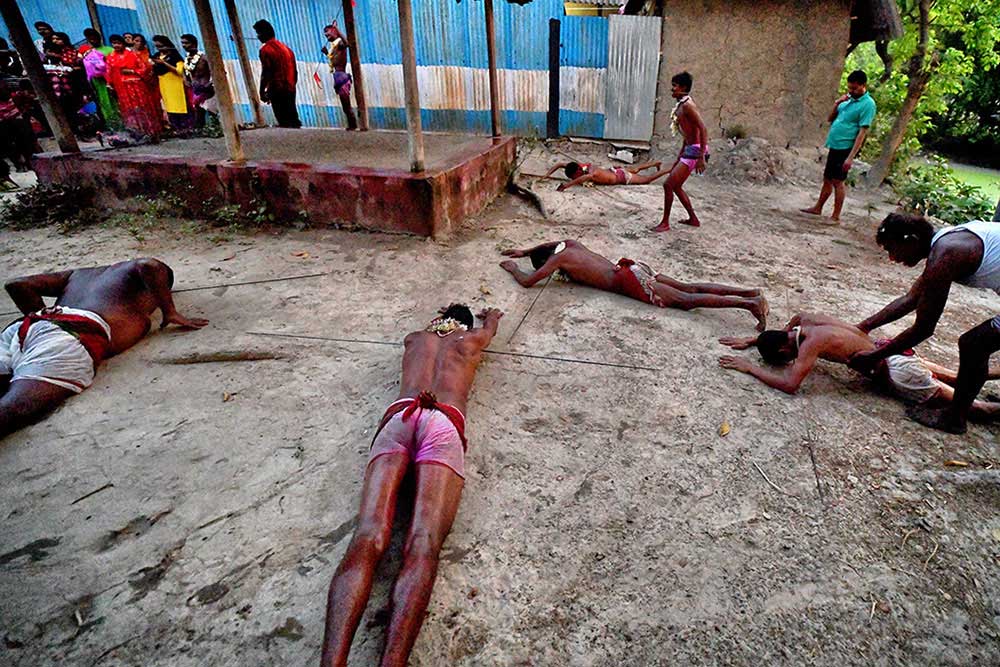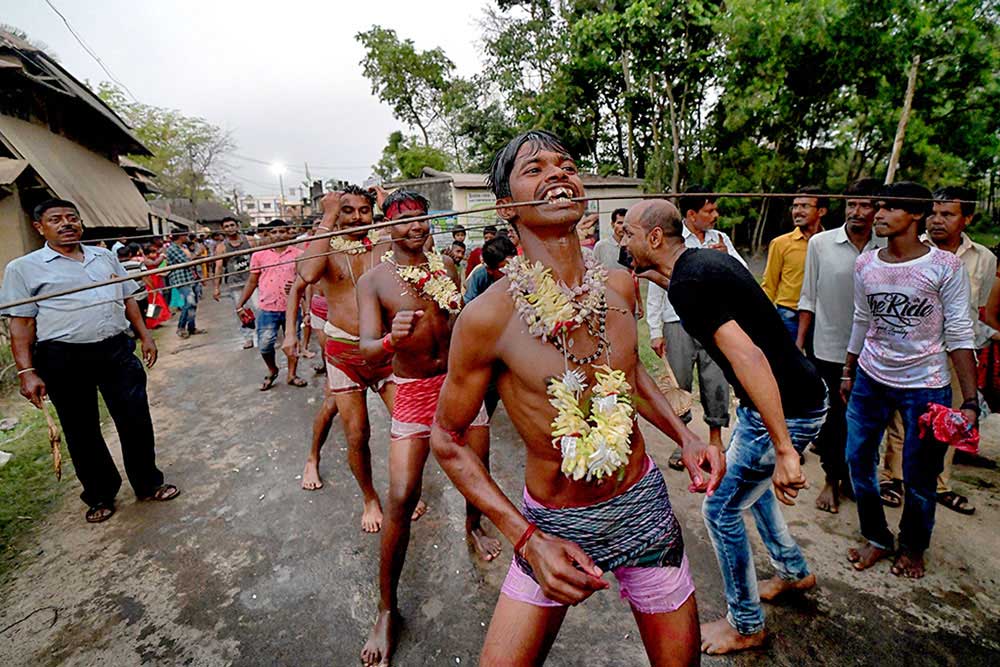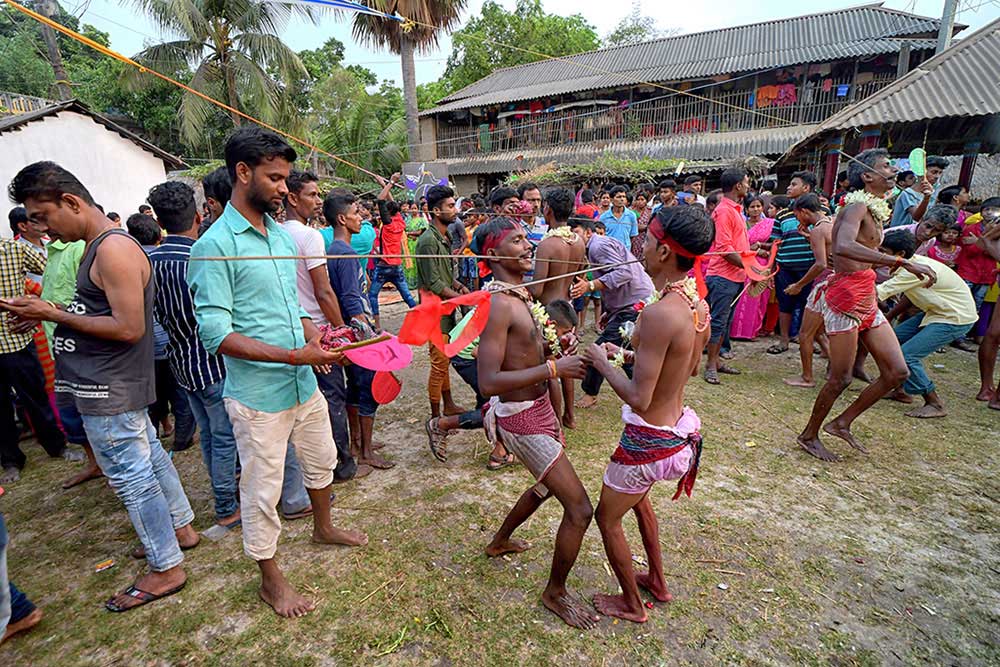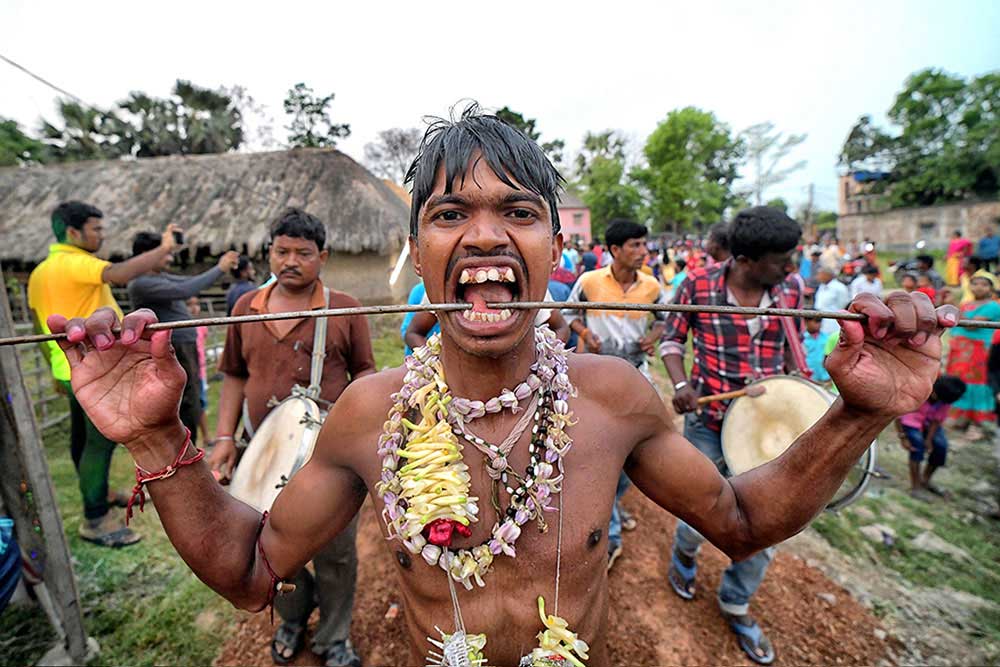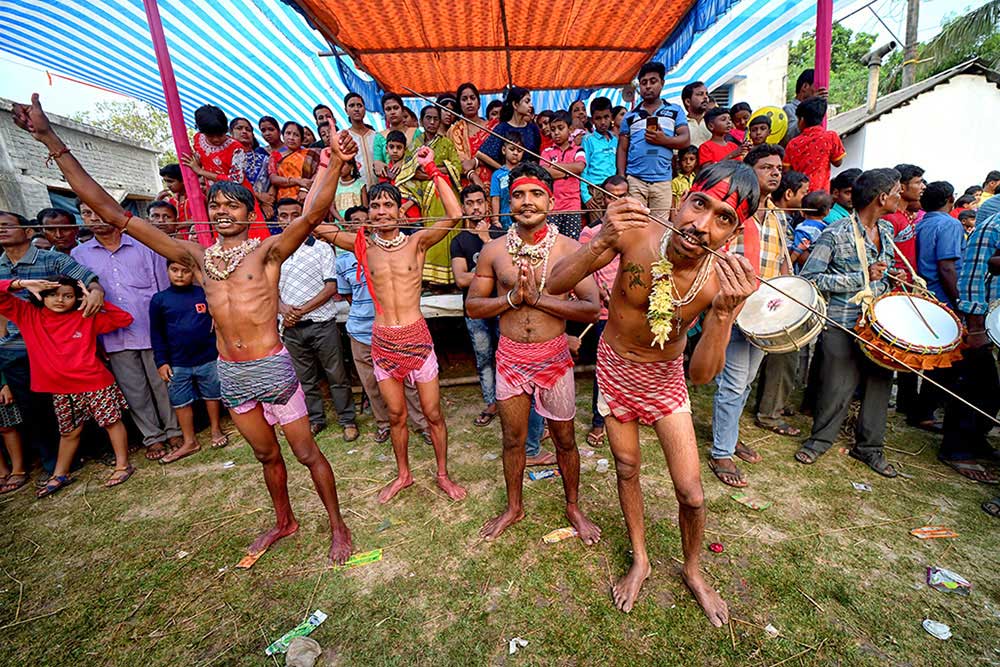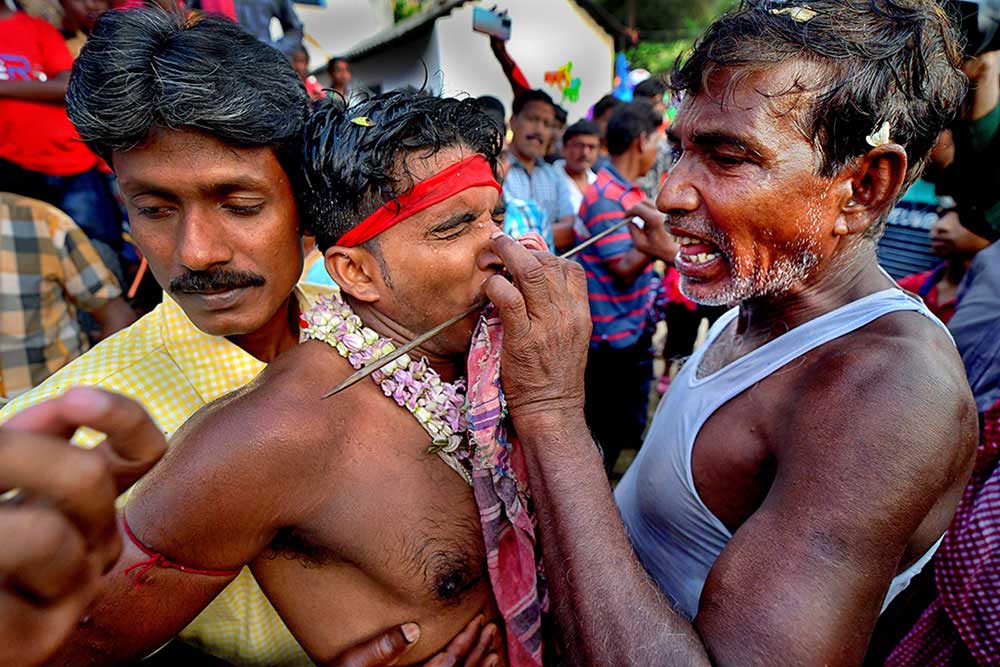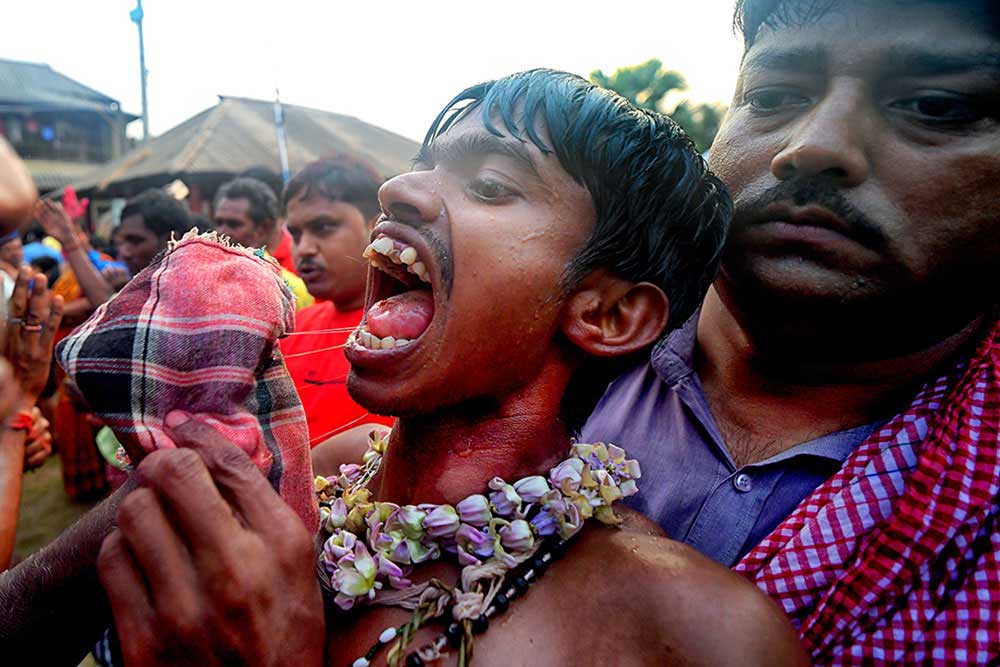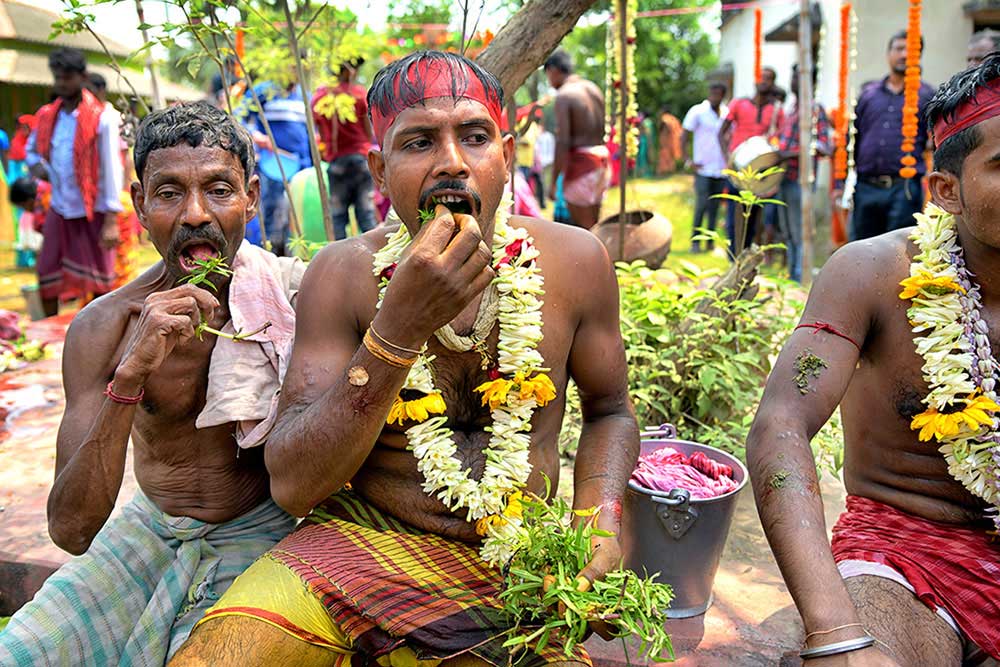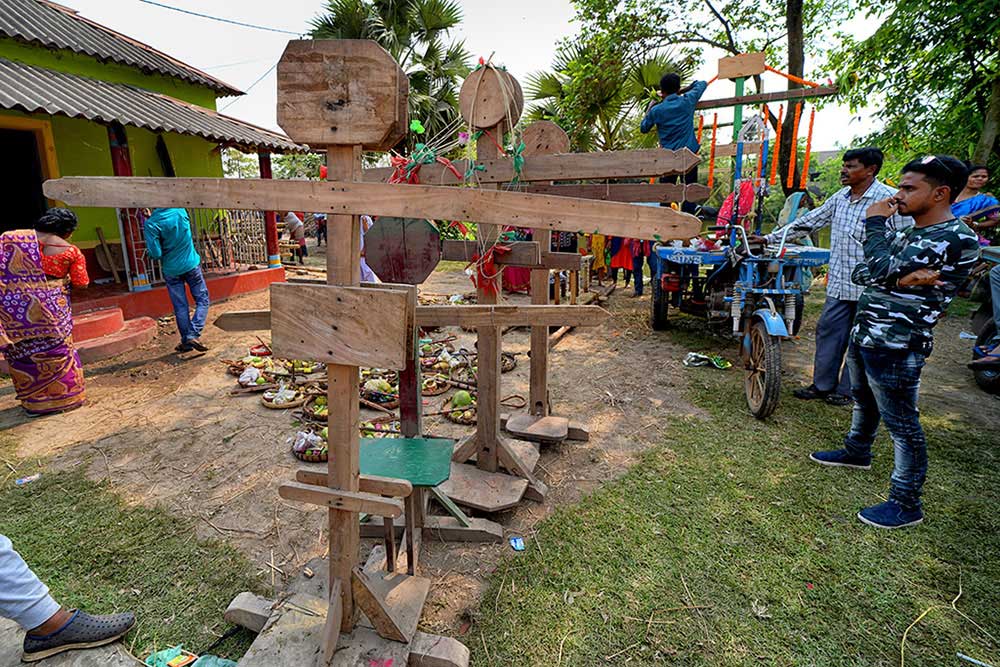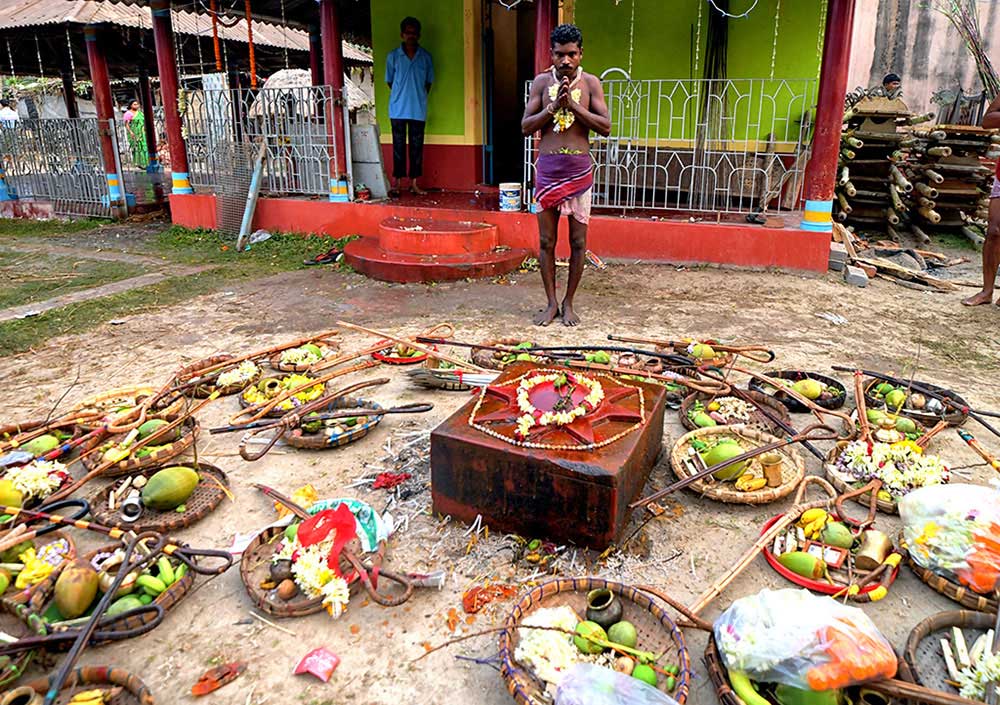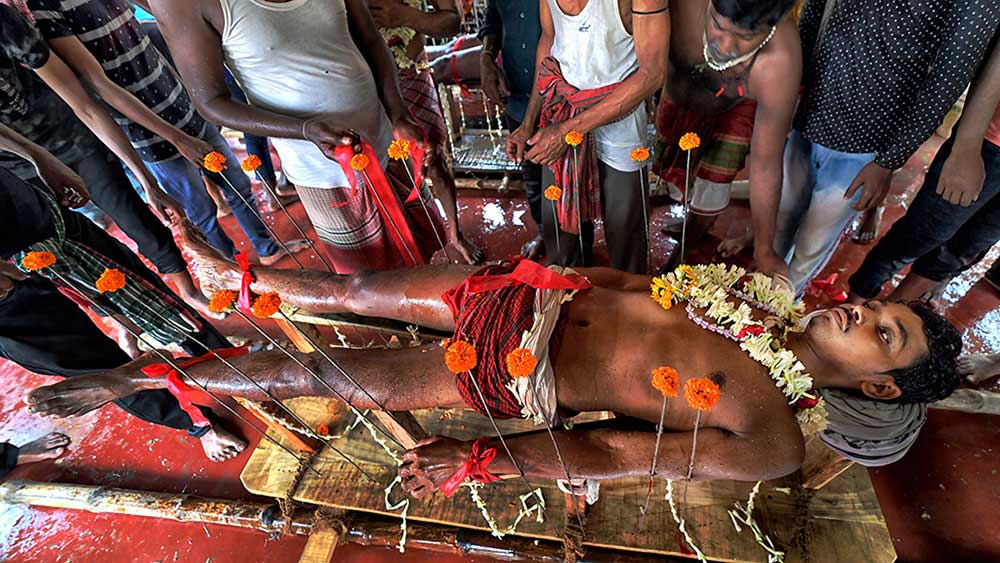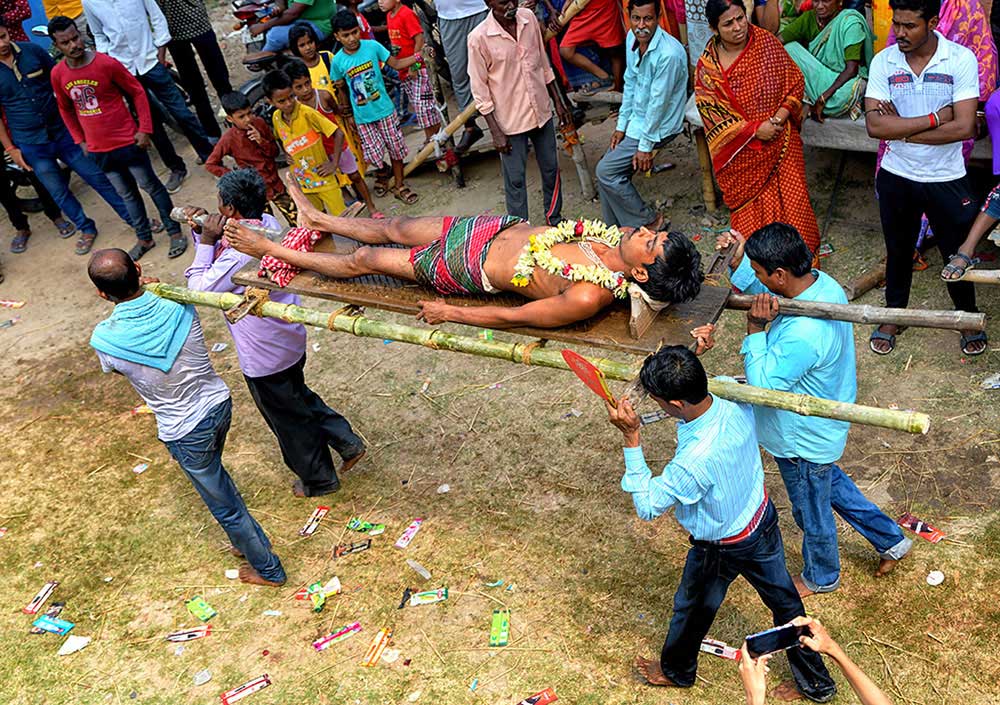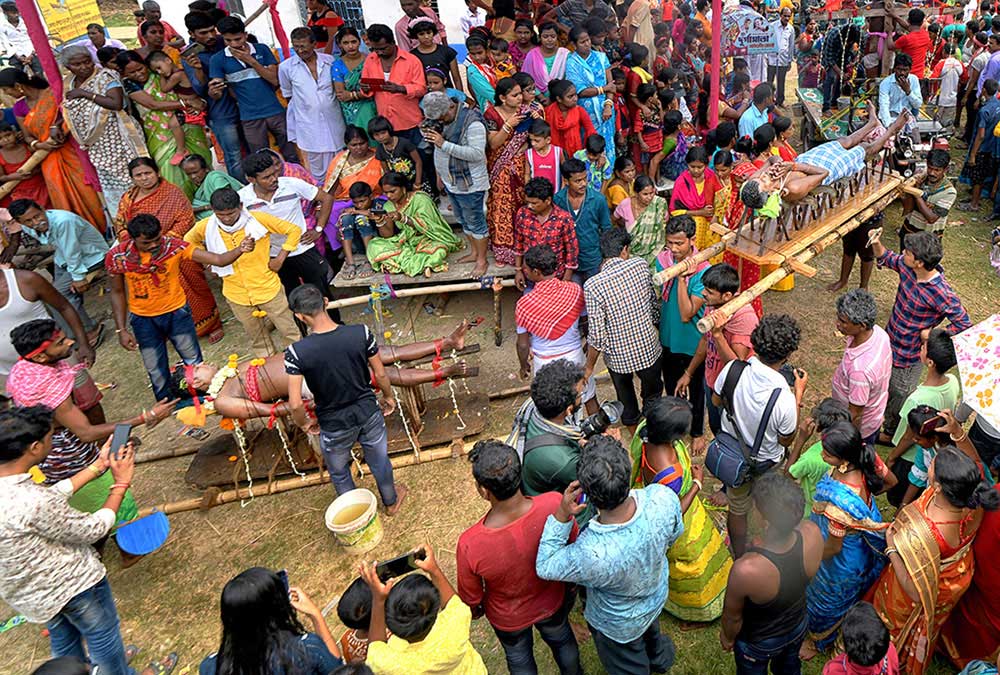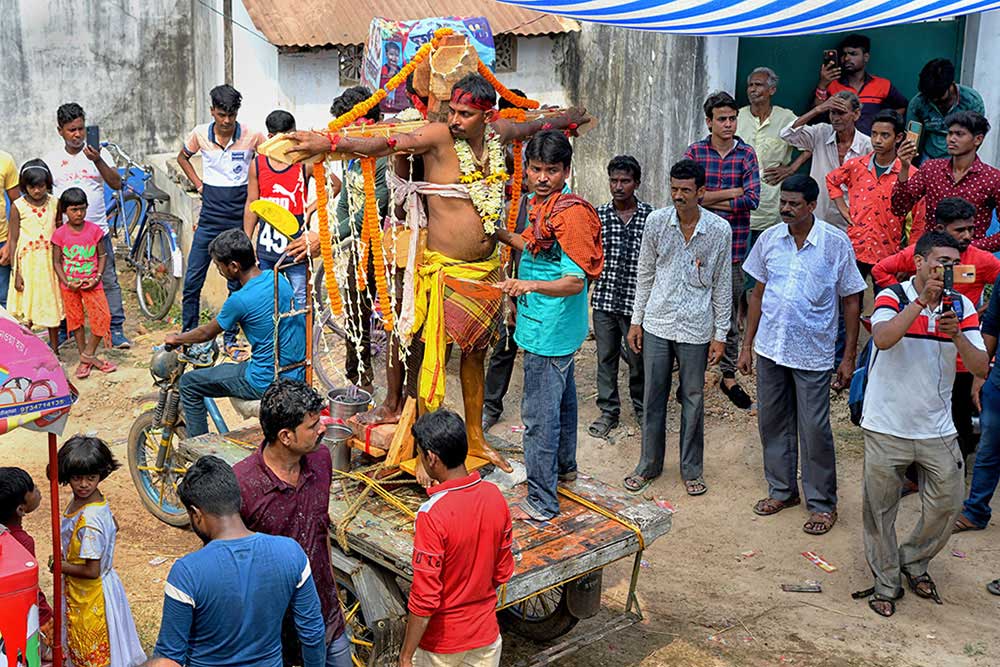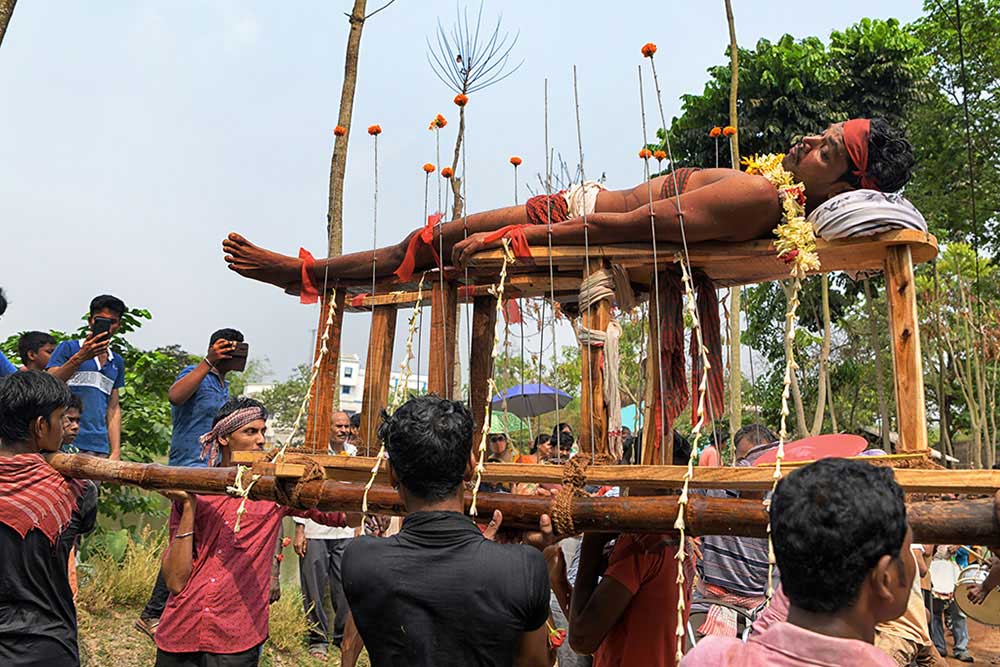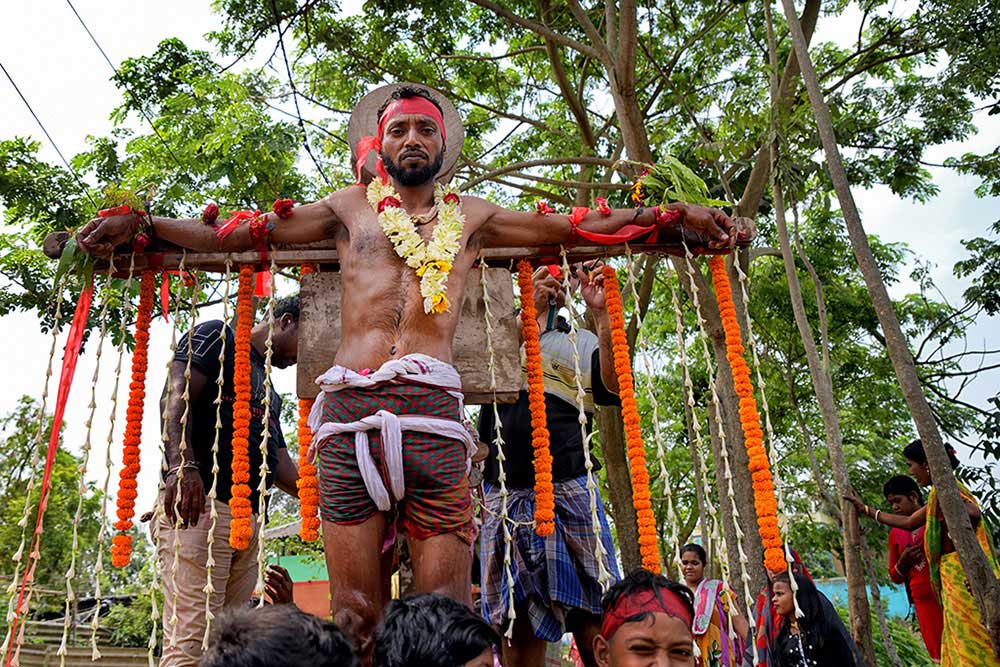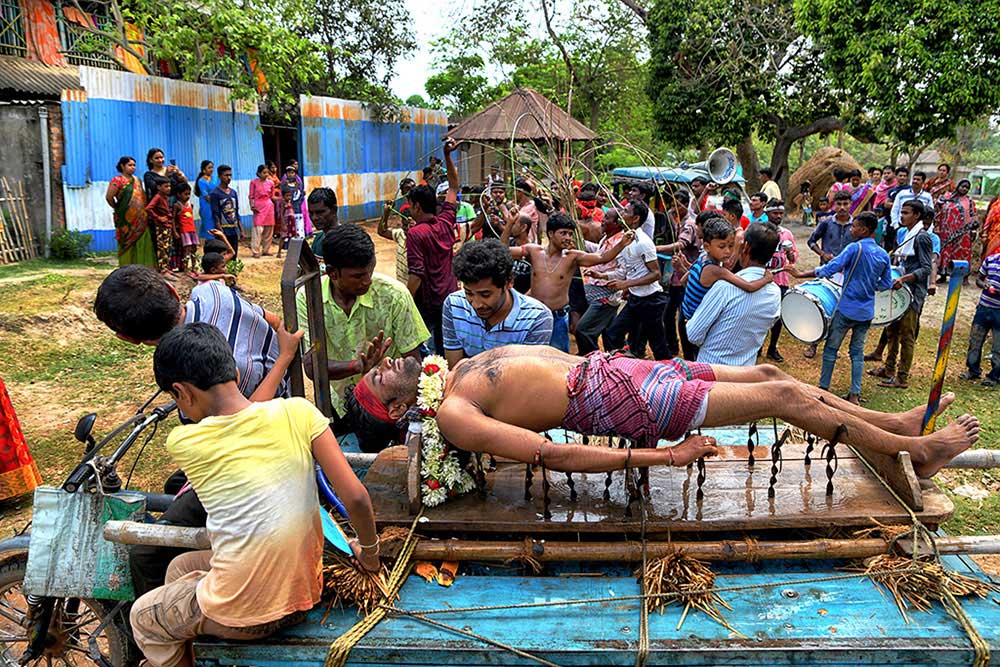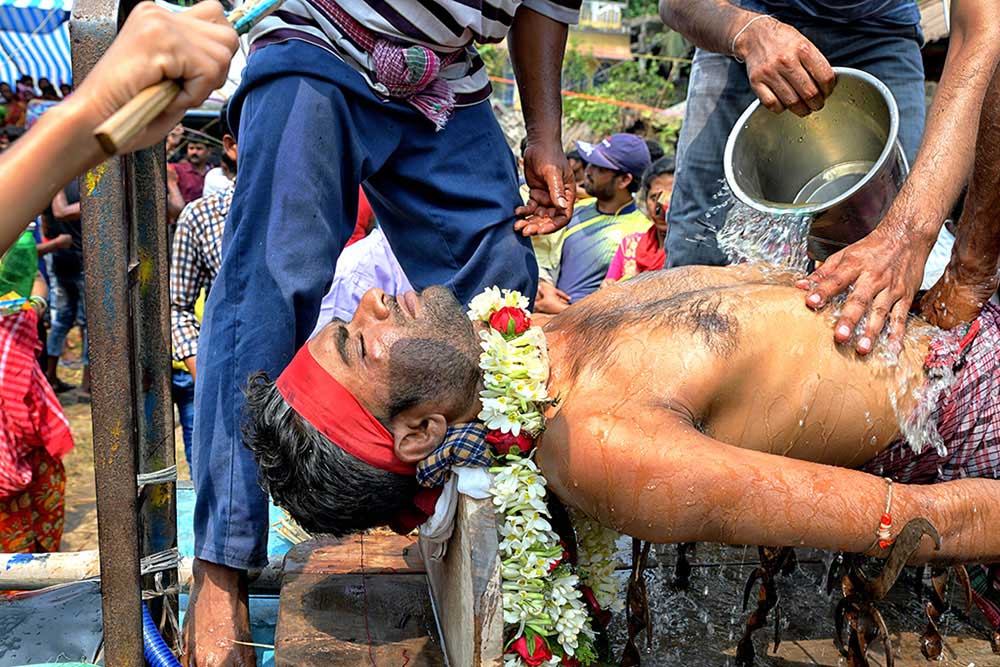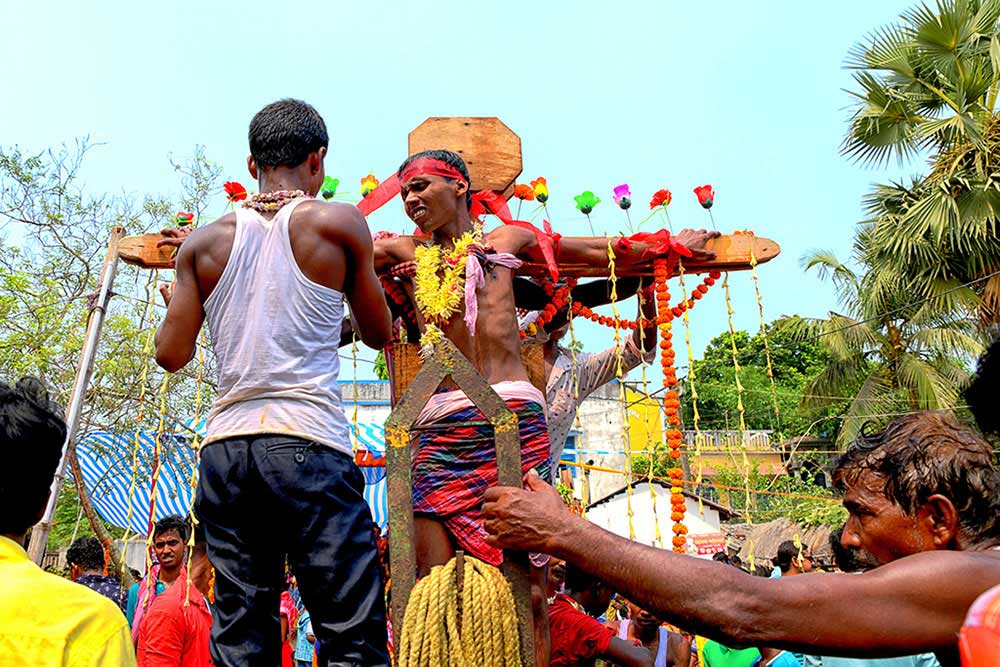Gajan or Shivagajan is a Hindu religious festival celebrated mostly in West Bengal. Gajan spans around a week, starting at the last week of Choitro or Chaitra (last month of Bengali calendar) continuing till the end of the Bengali year with Charak Puja.
Participants of this festival are known as Gajan Sannyasi or Bhokta. Gajan is actually linked to those persons who are related to agricultural community, directly or indirectly. They pray for the rains and better harvest. Lord Shiva is said to be closely related to this community. It may be worth noting here that Dharmathakur is actually considered to be the God of Fertility. The festival is actually a festival to satisfy “Lord Shiva”, the great “Debadideb” of Hindu Religion. In Gajan festival, devotees worship Lord Shiva by injuring themselves through piercing of niddles, iron rods, hooks and by many other means in different parts of their bodies including tongue, lips, ear etc. They believe that through pain and injury, they could reach to the God.
The devotees dance, shout and roam around villages madly, assuming themselves as Nandi and Bhiringi (great devotees of Lord Shiva). This Gajan festival is celebrated in different forms in West Bengal. In some villages, children portray mostly as Lord Shiva or Lord Krishna, wearing eye-catching costumes and faces are painted in blue or white colour. In some villages, devotees play with skull pretending to be the real devotee of Lord Shiva.
The photo story has been made on celebration of Gajan festival in a remote village of Hooghly district of West Bengal. The unique features of this celebration is that here villagers pierce iron rod in their body, tongue and crucify themselves by laying down on wooden framework with huge nails fixed on it. The ritual starts in the early morning in a temple of Lord Shiva with piercing iron rods in their tongue, bodies around 4 AM. The long iron rods are pierced from one end of their mouth or tongue to the other end and rods hang from both the sides. After piercing, Sannasis wait at the temple ground to complete whole process of piercing. After completion of piercing, Sannasir stated running through village road in a circular procession towards another temple of the village and then come back to their original destination. During this time, they dance facing each other balancing their long iron rods and it is very dangerous to follow them as one might be injured due to sharp edges of long iron rods. During this festival, drums and rural songs are played in loudspeaker so loudly that one can barely hear another. All Sannasir are in bare bodies, wearing only small langot, as Indian village wrestlers wear during wrestling. After reaching original destination, then slowly the devotees started removing the iron rods from their mouth and body. This time faint traces of blood are noticed in their mouth and body. Surprisingly, they don’t use any antiseptic or any medicine on their injury. Immediately after removal of iron rods from their mouth or body, they are provided with some leaves which they put into their mouth. The leaves are locally known as ‘Kala Puspa’. It is used to stop bleeding and reducing pain and it works like magic. It is learnt that injuries are cured within two three days. The morning ritual is finished after removing iron rods from their mouth and bodies.
After morning rituals are over, there is a gap for about two hours. The preparation for crucifying rituals started at about 9 AM. Some devotees lay down on a wooden framework with large numbers of nails fixed on it. Some lay down on wooden frame having many sharp iron blades. Some experienced people are fixing nails on Sannasis body and tying them with a cloth to the wooden cross. This is called crucifixion. Sannasis, who are laid down on nail fixed wooden frame or crucified on wooden frame are taken on cycle van. As the cycle vans with ‘crucified’ persons start moving towards another temple, there is a huge commotion as village people runs with the procession. The vans and the devotees run in a circle and return back to the Shiva temple. All devotees pray to the Lord Shiva and the ritual is finished.
About Shaibal Nandi
He is an amateur photographer of age about 54 years practicing photography seriously for last 4 years. By profession he is in government service and has taken up photography as a passion. He has very little knowledge about photography before and started with Nikon D5200 with 18- 140 mm Nikon lens. Presently he is using Nikon D850. He is basically interested in street photography with human interest, different rituals, cultures, traditions of people across the country. Beside those, he also like creative and abstract works. His works have been published in few international sites and magazines. He participated in national and international salon competitions and achieved AFIP distinction. His social media links are given below.



